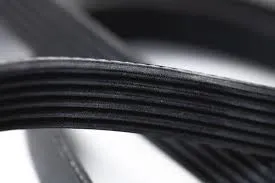- Arabic
- French
- Russian
- Spanish
- Portuguese
- Turkish
- Armenian
- English
- Albanian
- Amharic
- Azerbaijani
- Basque
- Belarusian
- Bengali
- Bosnian
- Bulgarian
- Catalan
- Cebuano
- Corsican
- Croatian
- Czech
- Danish
- Dutch
- Afrikaans
- Esperanto
- Estonian
- Finnish
- Frisian
- Galician
- Georgian
- German
- Greek
- Gujarati
- Haitian Creole
- hausa
- hawaiian
- Hebrew
- Hindi
- Miao
- Hungarian
- Icelandic
- igbo
- Indonesian
- irish
- Italian
- Japanese
- Javanese
- Kannada
- kazakh
- Khmer
- Rwandese
- Korean
- Kurdish
- Kyrgyz
- Lao
- Latin
- Latvian
- Lithuanian
- Luxembourgish
- Macedonian
- Malgashi
- Malay
- Malayalam
- Maltese
- Maori
- Marathi
- Mongolian
- Myanmar
- Nepali
- Norwegian
- Norwegian
- Occitan
- Pashto
- Persian
- Polish
- Punjabi
- Romanian
- Samoan
- Scottish Gaelic
- Serbian
- Sesotho
- Shona
- Sindhi
- Sinhala
- Slovak
- Slovenian
- Somali
- Sundanese
- Swahili
- Swedish
- Tagalog
- Tajik
- Tamil
- Tatar
- Telugu
- Thai
- Turkmen
- Ukrainian
- Urdu
- Uighur
- Uzbek
- Vietnamese
- Welsh
- Bantu
- Yiddish
- Yoruba
- Zulu
নভে. . 16, 2024 18:43 Back to list
timing belt pulley
The Importance of Timing Belt Pulleys in Automotive Engineering
When it comes to the intricate world of automotive engineering, few components hold as much significance as the timing belt and its associated pulleys. The timing belt is a crucial part of an engine, responsible for synchronizing the movement of the crankshaft and camshaft(s). This synchronization is vital for maintaining the engine's timing, ensuring that the valves open and close at the proper intervals in relation to the pistons' movements. At the heart of this system are the timing belt pulleys, which play a pivotal role in this synchronization process.
Understanding Timing Belt Pulleys
Timing belt pulleys are circular components that are designed to work in tandem with the timing belt. They are usually made from a durable material that can withstand the significant stress and strain of high-speed engine operation. Each pulley has teeth that interlock with the teeth of the timing belt, preventing slippage and effectively transmitting motion between different parts of the engine.
Typically, an engine will have at least two primary pulleys the crankshaft pulley and the camshaft pulley. The crankshaft pulley is attached to the crankshaft, which converts the linear motion of the pistons into rotational motion. As the crankshaft rotates, it drives the timing belt, which in turn rotates the camshaft pulleys. This coordinated motion is vital for the proper functioning of the engine, as it ensures that the valves open and close at the correct times.
The Functionality of Timing Belt Pulleys
The primary function of timing belt pulleys is to maintain the timing of the engine. The precise alignment of the timing belt and pulleys allows for optimal performance, preventing issues such as misfiring or poor fuel efficiency. Moreover, the use of pulleys enables the timing belt to transmit torque, allowing for the efficient transfer of power within the engine's system.
timing belt pulley

In addition to their role in timing, pulleys also contribute to the overall longevity of the engine. When paired with a well-maintained timing belt, pulleys help minimize wear and tear on critical engine components. Regular inspection and maintenance of both the timing belt and its pulleys can prevent costly repairs and enhance engine performance.
Signs of Wear and Tear
Despite their durability, timing belt pulleys are not immune to wear and tear. Over time, they can become worn or damaged due to the stresses of engine operation. Common signs of pulley issues include abnormal noises, such as grinding or chirping, during engine operation. Additionally, if the timing belt appears loose or off-track, it could indicate that the pulleys are not functioning as they should.
It is essential for vehicle owners to pay attention to these warning signs and conduct regular maintenance. Replacing a worn timing belt or pulleys before they fail can save motorists from unexpected breakdowns and potentially catastrophic engine damage. Most manufacturers recommend inspecting the timing belt and pulleys at regular intervals and replacing them according to the vehicle's maintenance schedule.
Conclusion
In conclusion, timing belt pulleys are a fundamental part of automotive engineering that cannot be overlooked. Their role in synchronizing engine components ensures that the engine runs smoothly and efficiently. By understanding the importance of timing belt pulleys and performing regular maintenance, vehicle owners can prolong the life of their engines and ensure optimal performance. In the world of automotive engineering, every component matters, and timing belt pulleys play a vital role in the intricate dance of moving parts that keeps our vehicles running.
-
Korean Auto Parts Timing Belt 24312-37500 For Hyundai/Kia
NewsMar.07,2025
-
7PK2300 90916-T2024 RIBBED BELT POLY V BELT PK BELT
NewsMar.07,2025
-
Chinese Auto Belt Factory 310-2M-22 For BMW/Mercedes-Benz
NewsMar.07,2025
-
Chinese Auto Belt Factory 310-2M-22 For BMW/Mercedes-Benz
NewsMar.07,2025
-
90916-02660 PK Belt 6PK1680 For Toyota
NewsMar.07,2025
-
drive belt serpentine belt
NewsMar.07,2025

